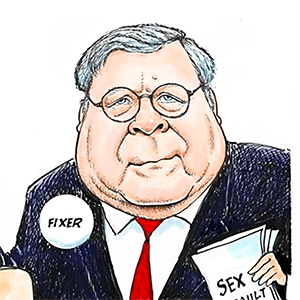Oakland police to cut off public from live radio feeds, hiding communications from airwaves
Published in News & Features
OAKLAND, Calif. — For decades, the public has had the ability to tune into radio channels where Oakland police and other Bay Area law enforcement agencies discuss emergency calls and coordinate responses.
The police scanner feeds are a prime source of transparency around cop activity, but in the coming months the Oakland Police Department will retreat into its own private, encrypted channels — out of sight from the public.
The process, which was scheduled to begin last Monday, involves physically re-programming every device held by the department, per an internal memo sent out earlier this month.
“The plan is to update all the handhelds and in-car radios before we move over to the encrypted channels sometime in the late summer or early fall this year,” Carlo Beckman, a project manager at OPD, wrote in the memo obtained by this news organization.
City spokesperson Sean Maher said Oakland “will not incur additional costs” for encrypting its radios, because the officers’ devices are already equipped with the needed software.
On Friday, state Sen. Josh Becker, a Democrat, decried the notion of another police department moving to encrypt its radio traffic. The senator has repeatedly tried to pass legislation in recent years to significantly restrict law enforcement agencies’ ability to encrypt their communications, framing it as a key means to hold officers accountable for their actions.
“This is a negative – we want access for journalists, we want access for the public,” Becker said in an interview. “I think it’s a loss for the public, it’s a loss for journalism.”
His work has coincided with law enforcement agencies across the region going effectively radio silent to the public’s ears.
It is a relatively recent trend: the Antioch Police Department became only the second department in California to encrypt its channels when it voluntarily made the switch in 2015, before multiple scandals ripped through the agency amid claims of widespread civil rights abuses.
San Jose, Santa Clara County Sheriff’s, Livermore, Walnut Creek, Mountain View and San Francisco are among the agencies that have done so more recently.
Given that such radio traffic has been publicly accessible in California since the 1920s, Becker has argued, there’s no reason that anything should change now.
The Oakland Police Department’s communications team on Friday argued that encryption “ensures that sensitive information remains secure,” while citing the 2020 California Department of Justice directive to protect identifying personal information.
“Encrypting our channels is a critical step in strengthening operational security and enhancing the safety of our first responders while continuing to support public safety,” the department said in a statement.
Even some privacy advocates, however, expressed unease about the police department’s move.
Brian Hofer, chair of Oakland’s Privacy Advisory Commission, said in certain instances police may legitimately need to shield their communications.
Encrypted radios, he said, may help prevent officers serving a search warrant from inadvertently tipping off suspects who could arm themselves or destroy evidence. Police have echoed the argument, saying they’ve arrested suspects carrying scanners.
But those instances are relatively rare, Hofer added, and “on balance, there is a greater need for transparency into government actions.”
“There’s got to be a million different technical workarounds to this,” Hofer said. “That, to me, undercuts the justification for spending this money.”
Unlike almost every other law enforcement agency in Northern California, Oakland’s police department has been under the watch of a federal court-appointed monitor for more than two decades, because of a string of abuses dating back to the Riders brutality case in the early 2000s.
The oversight has been repeatedly extended by a judge amid a revolving door of police chiefs — some of whom have lasted less than a week in office — and a run of new scandals, often involving officers lying about their misconduct.
“For a police department that wants to escape the weight of federal oversight, I think more transparency is called for, not less,” Hofer added.
The state’s Department of Justice, led by then-Attorney General Xavier Becerra, authored a memo in October 2020 ordering law enforcement agencies to prevent public access to a highly confidential criminal database.
The DOJ suggested encrypting radio traffic as a way to secure personal information kept in the database, which is known as the California Law Enforcement Telecommunications System, or CLETS.
Notably, the state directive also advises that law enforcement agencies can simply restrict certain CLETS information while “allowing for radio traffic with the information necessary to provide public safety.”
In other words, police are not required to encrypt their radios.
But some agencies appear to have interpreted it that way, including the San Jose Police Department, which in a January 2021 memo referred to the state directive as a new DOJ “requirement.”
The memo noted that San Jose police were already in compliance, having hidden most of their day-to-day dispatch channels from the public a year before, amid the onset of the coronavirus pandemic.
Some Oakland city officials on Friday seemed to be under a similar impression as San Jose police leaders. Oakland’s public works and fire departments use the same handheld models as the police, but officials said Friday that only the police are pursuing encryption.
That assumption, experts said, carries new risks for the city and its police department.
“When you encrypt radios, public information becomes sort of discretionary information,” said Tracy Rosenberg, executive director of San Francisco nonprofit Media Alliance. “In other words, the community will be notified when law enforcement chooses to notify them. That could potentially leave a lot of gaps.”
(Staff writer Robert Salonga contributed to this report.)
©2025 MediaNews Group, Inc. Visit at mercurynews.com. Distributed by Tribune Content Agency, LLC.







Comments